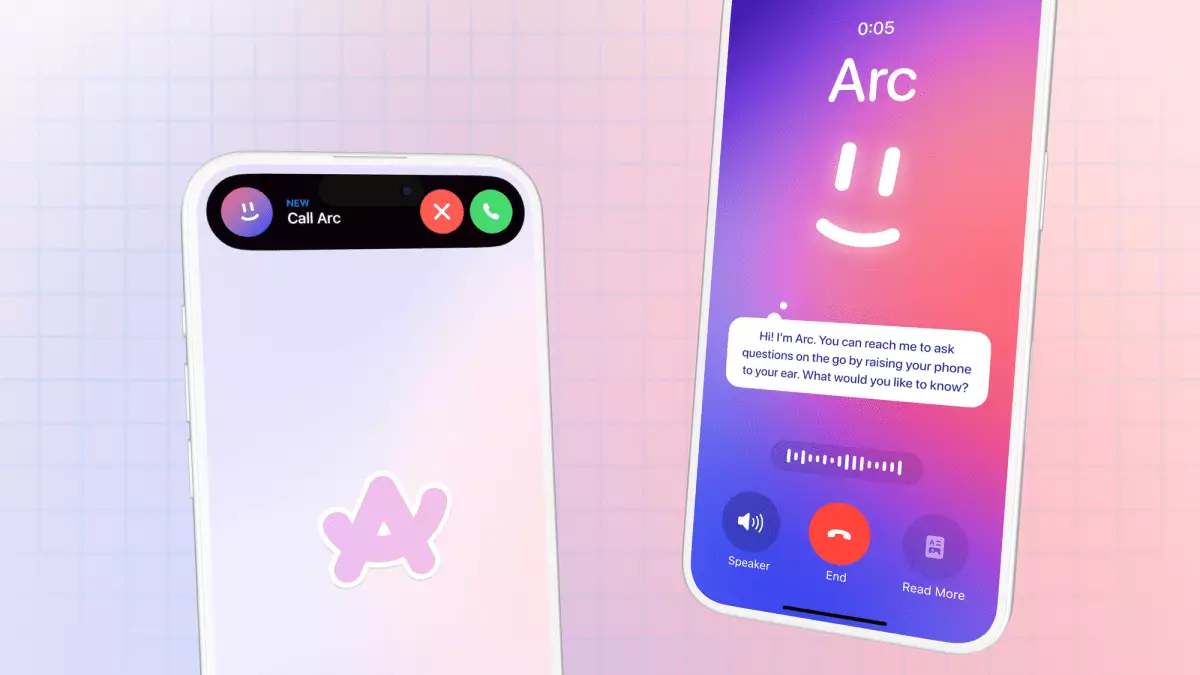In a landscape increasingly saturated with innovative tech solutions, The Browser Company is poised to disrupt the market once again with its upcoming browser, Dia. Set for launch in early 2025, Dia represents a strategic shift for the company, moving from its previous product, Arc, to an even more ambitious exploration of integrated artificial intelligence (AI) tools. This article dissects the implications of this shift, exploring what makes Dia a potentially groundbreaking product in the web browsing ecosystem.
The Browser Company has made substantial strides since the introduction of Arc for both desktop and mobile platforms. Arc captured attention for its sleek design and intuitive user interface, initially tailored for Mac and Windows. It expanded its capabilities with Arc Search for iOS and Android devices, catering to a diverse audience seeking an alternative to traditional web browsers. However, the announcement of Dia suggests that The Browser Company is eager to cast a wider net, targeting not just tech-savvy users but also a broader population that seeks productivity enhancements in their everyday browsing experiences.
By leveraging its existing user base and understanding of complex browsing patterns, the company hopes to craft a user experience that marries familiarity with innovation. This dual focus could potentially enhance user loyalty and encourage new users to explore the capabilities of DIA.
At the heart of Dia lies a radical rethinking of how users interact with web browsers. Formal announcements emphasize that AI will be woven into the fabric of dia, challenging the conventional notion that AI is merely an accessory—such as a standalone app or an auxiliary feature. The Browser Company asserts that AI may become a fully integrated environment, redefining user engagement with technology. This assertion is a game-changer; it signals to users that they will interact with their browser in a more dynamic and helpful manner than ever before.
Initial demos from The Browser Company’s CEO, Josh Miller, revealed compelling features designed to elevate user productivity. For instance, a remarkable tool that operates at the insertion cursor helps users complete writing tasks by suggesting the next sentence or curating relevant information in real time. This functionality extends beyond mere text generation, suggesting that Dia will understand the context of user tasks, whether it involves producing content about historical events or gathering details from the web.
Seamless Integration and User Empowerment
Another standout feature showcased in the demo is the ability of Dia to simplify communication and scheduling. Users will have the power to command the browser to dispatch emails or schedule meetings using natural language prompts. This is not merely an enhancement of current capabilities; it illustrates a vision where user intentions are effortlessly translated into actions, reducing the cognitive load and streamlining routine tasks. Such automation has the potential to transform daily productivity for users who navigate multiple responsibilities.
However, while these features promise great utility, one cannot help but wonder about their effectiveness. The true test of Dia will be its reliability and ability to enhance tasks in a meaningful and useful manner. Historical instances with similar technology, like the Rabbit R1, serve as cautionary tales; these devices often struggle to make optimal choices or fully understand user needs. The Browser Company faces the challenge of delivering a product that reliably enhances user experience rather than complicating it.
As The Browser Company embarks on this venture, it must contend with an escalating landscape of competitors eager to harness AI within their platforms. Numerous startups and established companies have introduced varying iterations of AI-driven solutions, each attempting to capture market share and consumer loyalty. The Browser Company’s success hinges on distinguishing Dia’s offerings from alternatives and meeting user expectations for seamless interaction and functionality.
Moreover, the introductory video hints at a careful balance between innovation and maintaining the existing appeal of Arc. As the company broadens its scope, it is vital to retain its existing users while attracting newcomers. The transition may prove challenging, but it also presents an opportunity for growth and refinement, allowing The Browser Company to carve a niche in the burgeoning field of AI-enhanced browsing.
Dia represents a pivotal moment for The Browser Company and the web browsing experience as a whole. With ambitious features that promise to merge AI capabilities with daily web tasks, Dia has the potential to not only elevate user productivity but also reshape our understanding of what a web browser can be. As we await its release in 2025, the landscape of browsing is sure to be nuanced by how effectively Dia can deliver on its vision and the challenges it will face in a competitive, fast-evolving digital arena.

